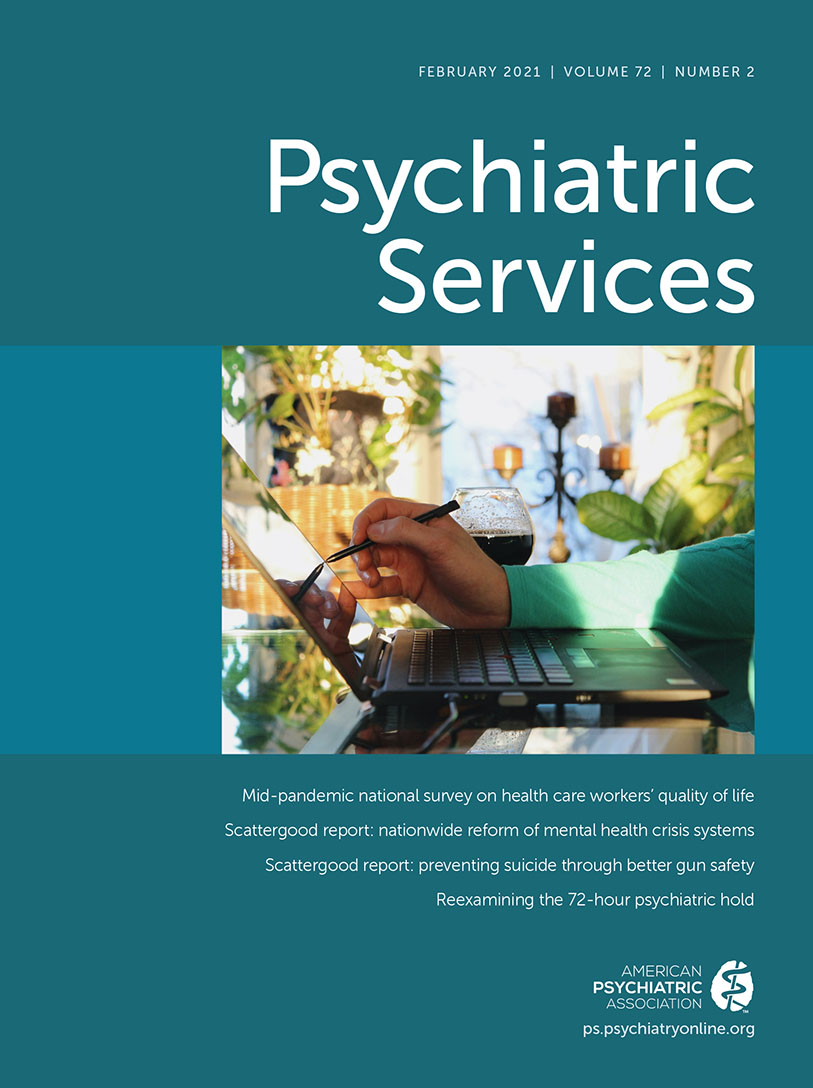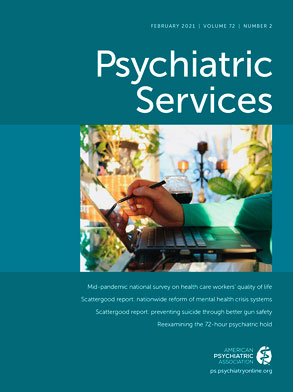TO THE EDITOR: In our prior article (
1), we reported substantial differences between Veterans Health Administration medical centers in the excess mortality associated with mental health conditions. Hazard ratios (HRs) were calculated for all-cause mortality of Veterans Affairs (VA) patients with serious mental illness (schizophrenia, other primary psychoses, and bipolar disorder), posttraumatic stress disorder, major depression, substance use disorders, or any mental health condition relative to rates for patients without these conditions from the same facilities. We indicated that further study is necessary to explore the community- and facility-level factors that may account for these differences. Here, we report initial findings from these analyses (see
online supplement).
Community factors considered in these analyses included age- and sex-adjusted rates for deaths from suicide and overdose, which were obtained from the Centers for Disease Control and Prevention WONDER database (
2), and prevalence rates for suicidal ideation obtained from the National Survey for Drug Use and Health (
3) for the states in which VA facilities were located. These variables were selected to probe for associations between excess mortality and deaths of despair (
4). Facility-level factors included suicide and overdose mortality rates, facility ratings for the quality of mental health services per a composite measure previously described (
5), and mental health staffing ratios defined as counts of outpatient mental health staff per 1,000 mental health patients.
For state variables, there were significant correlations across facilities between HRs for each of the categories of mental health conditions and both the rate of suicide (all p<0.001) and the prevalence of serious suicidal ideation in the state (all p values ≤0.001). In contrast, correlations between HRs and state rates of overdose mortality were not significant. For facility variables, there were, again, significant correlations of HRs with suicide rates (all p<0.001), but associations with overdose death rates and with the measures of the quality of mental health care were less robust and more variable. Higher staffing ratios were associated with decreased mortality of patients with substance use diagnoses, but we did not observe significant associations with other conditions.
These findings demonstrate that the excess mortality associated with mental health conditions is sensitive to the characteristics of the states; it is reasonable to speculate that associations with more granular measures of community factors may be stronger. The associations with state suicide rates suggest that the factors that led to the increased all-cause mortality observed among mental health patients are similar or related to the factors that contribute to suicide. However, the findings say nothing about what characteristics are salient; further studies should focus on associations with community stressors, resources, and other social determinants of health. For the VA, the variable associations of HRs with measures related to mental health care in the facilities suggest the importance of developing, validating, and utilizing measures of the quality of general medical care provided to patients with mental health conditions. More basically, they indicate that studies of the impact of health and mental health care on excess mortality must control for community factors.

